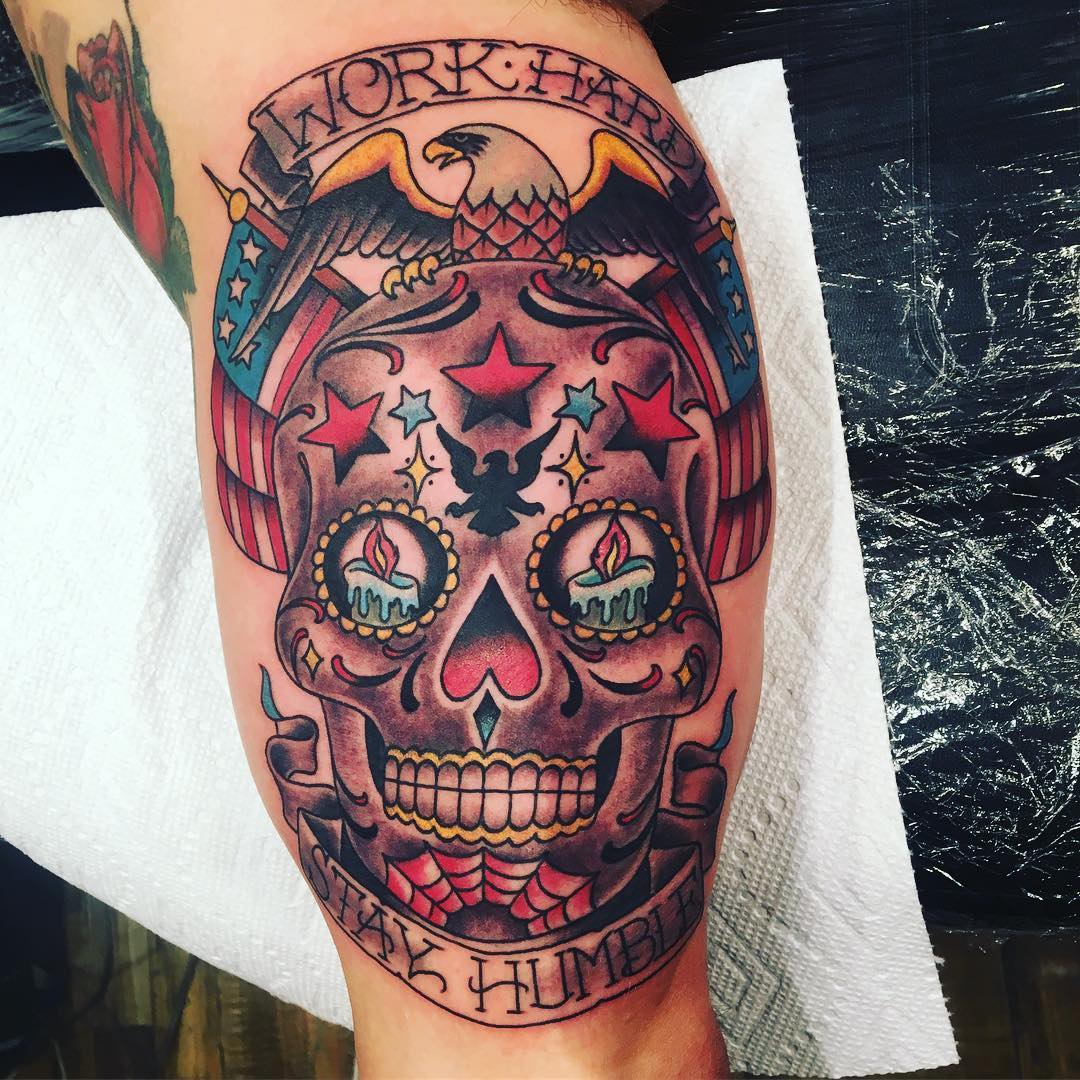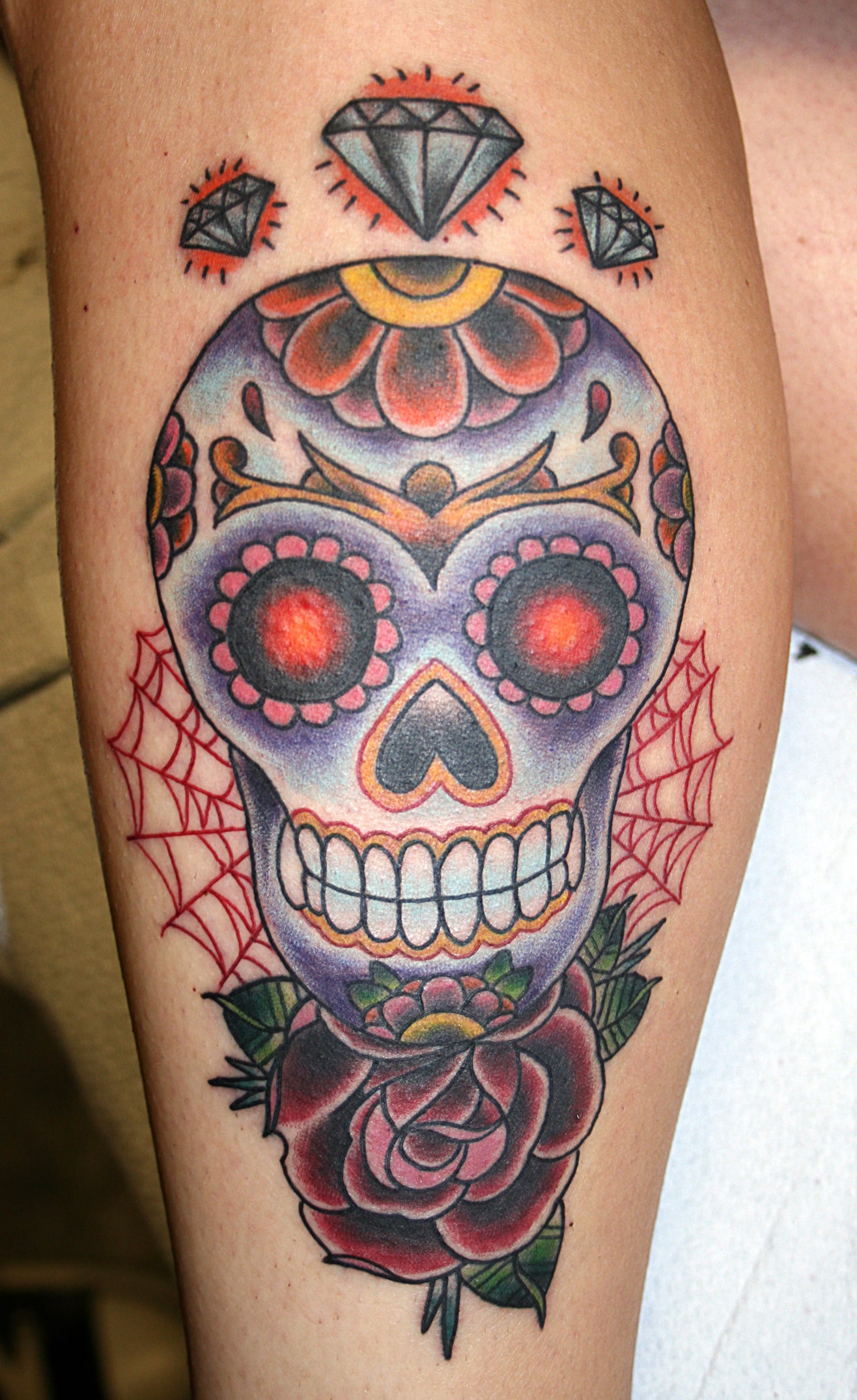Mexican Sugar Skull Tattoo Designs and Meanings

The vibrant art of Mexican sugar skull tattoo designs embodies a rich cultural heritage, where each intricate detail carries a profound meaning. Often referred to as calaveras, these tattoos aren't just stunning art pieces but carry deep-rooted symbolism from Mexican culture, particularly associated with the Día de los Muertos (Day of the Dead) celebrations. Let's delve into the essence of these tattoos, exploring their designs and the stories they tell.
Understanding Día de los Muertos and Calaveras

Día de los Muertos is a two-day celebration held at the beginning of November, honoring deceased family members. During this time, Mexicans celebrate with sugar skulls made of sugar and decorated with colorful frosting and adornments. These sugar skulls are a playful reminder of mortality and an invitation to celebrate life, even in death. This same jovial yet poignant symbolism is mirrored in sugar skull tattoos.
Design Elements and Meanings

Here are some key elements commonly found in sugar skull tattoos:
- Skull Shape: The skull itself symbolizes the human head, representing life, death, and rebirth.
- Flowers: Marigolds or other vibrant flowers are a nod to life's beauty and the cycle of nature.
- Colored Hearts: Often signify love and connection, especially to those we've lost.
- Butterflies: Symbolize transformation and the journey of the soul.
- Candles: Represent the light guiding souls home during Día de los Muertos.
- Roses: Red roses can symbolize blood or the beauty in life and death.
- Crosses: Often depict the crossover between life and death or Christian influences.
- Writing: Names, dates, or phrases that honor the deceased.
💡 Note: The specific colors used in sugar skull tattoos also carry meaning. For example, red represents the blood of life, purple reflects pain, orange stands for the sun, and white symbolizes purity.
The Cultural Significance of Sugar Skulls

Sugar skull tattoos carry a multitude of meanings beyond just a decorative piece:
- Memorialization: Often designed to honor a loved one who has passed away, incorporating elements that were unique to their life or personality.
- Celebration of Life: They are a way to celebrate the full spectrum of human existence, embracing death as a natural part of life.
- Cultural Pride: For those of Mexican descent, it's a way to show pride in their heritage and cultural practices.
- Expression of Artistry: These tattoos are often highly detailed, showcasing the artist's skill and the individual's taste for intricate designs.
Choosing the Right Design

When selecting a sugar skull tattoo, consider the following:
| Aspect | Considerations |
|---|---|
| Placement | Larger, more complex designs might be better suited for areas like the back, chest, or upper arm. |
| Size | Small tattoos can be intricate but might not show all the details you'd want. |
| Color or Black and Grey | Colored tattoos pop more with vibrant hues while black and grey provide a classic, often more somber look. |
| Personalization | Incorporate personal symbols or the name of someone you're memorializing. |

💡 Note: Tattoo artists can guide you in customizing your design to ensure it's meaningful to you while staying true to traditional Mexican sugar skull art.
Memorial Tattoos

Many people get sugar skull tattoos as a form of memorial, to keep the memory of a loved one close. Here are some ways to make your memorial tattoo personal:
- Name and Dates: Inscribed on the tattoo as a direct tribute.
- Symbols: Incorporate items or symbols that were significant to the person.
- Portrait Elements: Combine the skull with elements of their portrait or likeness.
- Cryptic Messages: Sometimes a cryptic phrase or a quote can encapsulate their essence.
The Application Process

Getting a sugar skull tattoo involves several steps:
- Design Consultation: Discuss with your tattoo artist to get a sketch of your design.
- Stenciling: A stencil is prepared to transfer the design onto your skin.
- Inking: The artist will start outlining with a tattoo machine, followed by shading and coloring.
- Healing: Aftercare instructions are provided to ensure proper healing and longevity of the tattoo.
💡 Note: Always ensure your tattoo artist uses clean needles, follows proper hygiene protocols, and has experience with intricate designs like sugar skulls.
Aftercare and Longevity

Taking care of your sugar skull tattoo is crucial:
- Clean the Tattoo: Use mild, unscented soap and water to clean the area gently.
- Moisturize: Apply a thin layer of tattoo aftercare ointment to keep it moisturized.
- Avoid Sun Exposure: Protect the tattoo from UV rays to prevent fading.
- Do Not Pick: Resist the urge to pick at scabs or peeling skin.
Proper aftercare ensures your tattoo remains vibrant and keeps its significance for years to come.
In Summary

Choosing a Mexican sugar skull tattoo is not just about getting ink on your skin but embracing a powerful symbol of life, death, and remembrance. Each element in these tattoos carries a story, a tradition, and a cultural connection. From memorializing loved ones to celebrating life, sugar skull tattoos offer a canvas for personal expression deeply rooted in Mexican heritage. When considering this style of tattoo, ensure you research the meanings behind the designs, choose a skilled artist, and commit to proper aftercare to maintain the tattoo's integrity over time.
Can sugar skull tattoos be customized?

+
Yes, sugar skull tattoos can be highly customized to include personal symbols, names, or elements that reflect the personality or interests of the person being memorialized.
What does the color purple signify in a sugar skull tattoo?

+
In a sugar skull tattoo, purple often represents pain, suffering, or a tribute to loved ones who endured struggles in life.
How long does it take to heal a sugar skull tattoo?

+
Healing times can vary, but on average, a tattoo will take about 2-4 weeks to heal. Proper care, avoiding picking at scabs, and keeping the tattoo moisturized will aid in the healing process.



